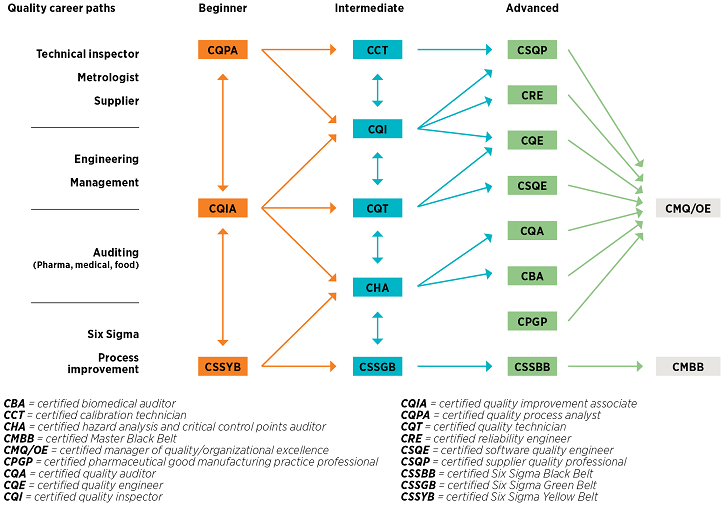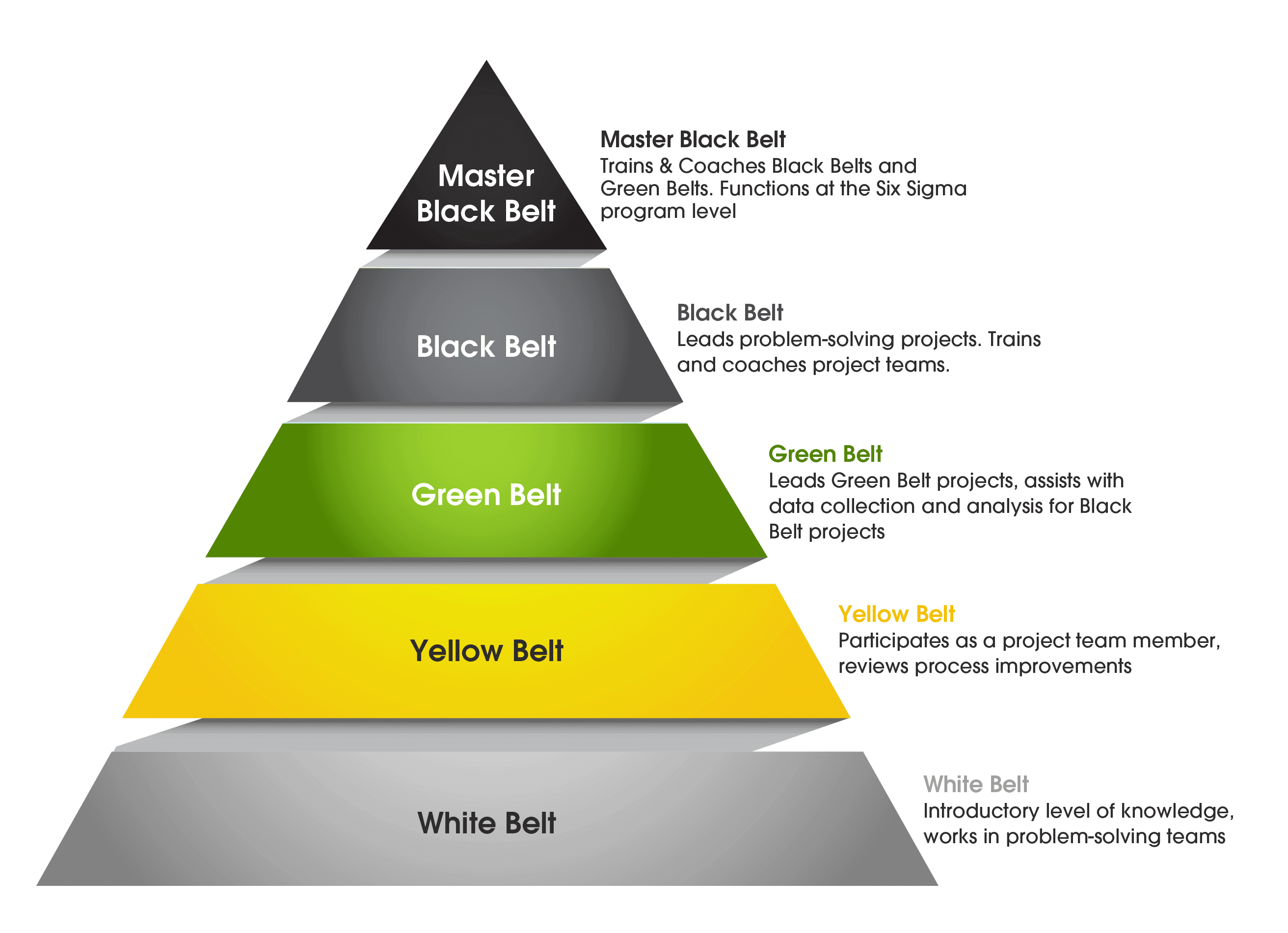
They include process engineer, process improvement analyst and quality control inspector.Īlso, according to data from the QP Salary Survey, the average salary for a Yellow Belt holder in the United States was $83,179 in 2016.Ĭlearly, earning a Yellow Belt can enhance a person’s career, helping them command higher salaries and levels of responsibility. The benefits to a company for employing a Yellow Belt program are clear, but what about to the employees themselves?Ī growing number of jobs are requiring a Yellow Belt designation in order for a person to get consideration for a position, according to a recent search on the online job site,. However, for some, earning a Yellow Belt will provide the springboard to moving into leadership roles by earning a Green Belt and Black Belt. Yellow Belts typically provide help on projects, but are not in a leadership role.
6 sigma belt levels how to#
How to foster buy-in from personnel into the Six Sigma methodology. How to make improvements in day-to-day work tasks (for example cutting down on wasted time and reducing the cycle time on a process). Methods for incorporating Six Sigma methodology to improve processes and achieve business goals. The basics of data collecting and measuring outcomes. An understanding of Six Sigma terminology. While various programs take slightly different approaches, the basic components of Yellow Belt training include the following. Some will earn certificates and others will earn certification, but the important factors are the skills they acquire. Given the benefits of Yellow Belts, it’s important to understand what they will learn after completion of their training. In short, those who earn Yellow Belts and work closely with the day-to-day operations of an organization can use their training to make small-but-important improvements in their areas, as part of a larger, overall strategy. Having advocates at all levels can help spread the use of Six Sigma methodology. However, knowledge of the basics of Six Sigma among people throughout an organization can provide a wealth of benefits.īecause of this, an increasing number of programs offer training and certification for the Yellow Belt level.įirst and foremost, Yellow Belts can come from many different areas of an organization, from administrators to operations personnel. Just like not everyone will become the next Larry Page and Sergey Brin of technology, not everyone will rise to the level of Black Belt. Master Black Belt – The pinnacle of Six Sigma designations requires five years’ experience at the Black Belt level as well as successful completion of 10 Six Sigma projects. Those in this role generally lead project teams and mentor Green Belts. Earning a Black Belt also requires passing a written exam, as well as successfully completing two Six Sigma projects. Earning a Green Belt certification requires passing a written exam and serving on a Six Sigma project team.īlack Belt – Those who achieve this level are typically on Six Sigma projects full-time. Typically, they are chosen to lead teams in certain areas where they have a mastery of the process being improved with the project. Green Belt – Green Belts spend as much as half of their work time on Six Sigma projects, providing a cornerstone to the process. Yellow Belts typically contribute to project teams in areas such as collecting data and creating process maps. 
Yellow Belt – Those who earn a Yellow Belt learn more about how Six Sigma is applied to improve a process, generally taking 10 to 15 hours of training. Those who get white belts can range from executives to workers at the lowest levels of the organizational chart.

White Belt – This provides students with the absolute basics of Six Sigma literacy, including some of the important terms and concepts associated with the methodology.

Six Sigma includes four different belt levels, as well as further training that can lead to the level of master. While not absolutely necessary before moving on to earning a Green Belt and Black Belt, becoming a Yellow Belt can provide solid preparation for moving up the Six Sigma belt ladder. For those searching for the perfect starting point to begin a journey in learning about Six Sigma, a Yellow Belt can provide the answer.ĭesigned to teach fundamentals without immediately throwing people into the deep end of the methodology pool, a Yellow Belt provides an entry-level way to start learning the concepts involved with implementing Six Sigma.







 0 kommentar(er)
0 kommentar(er)
